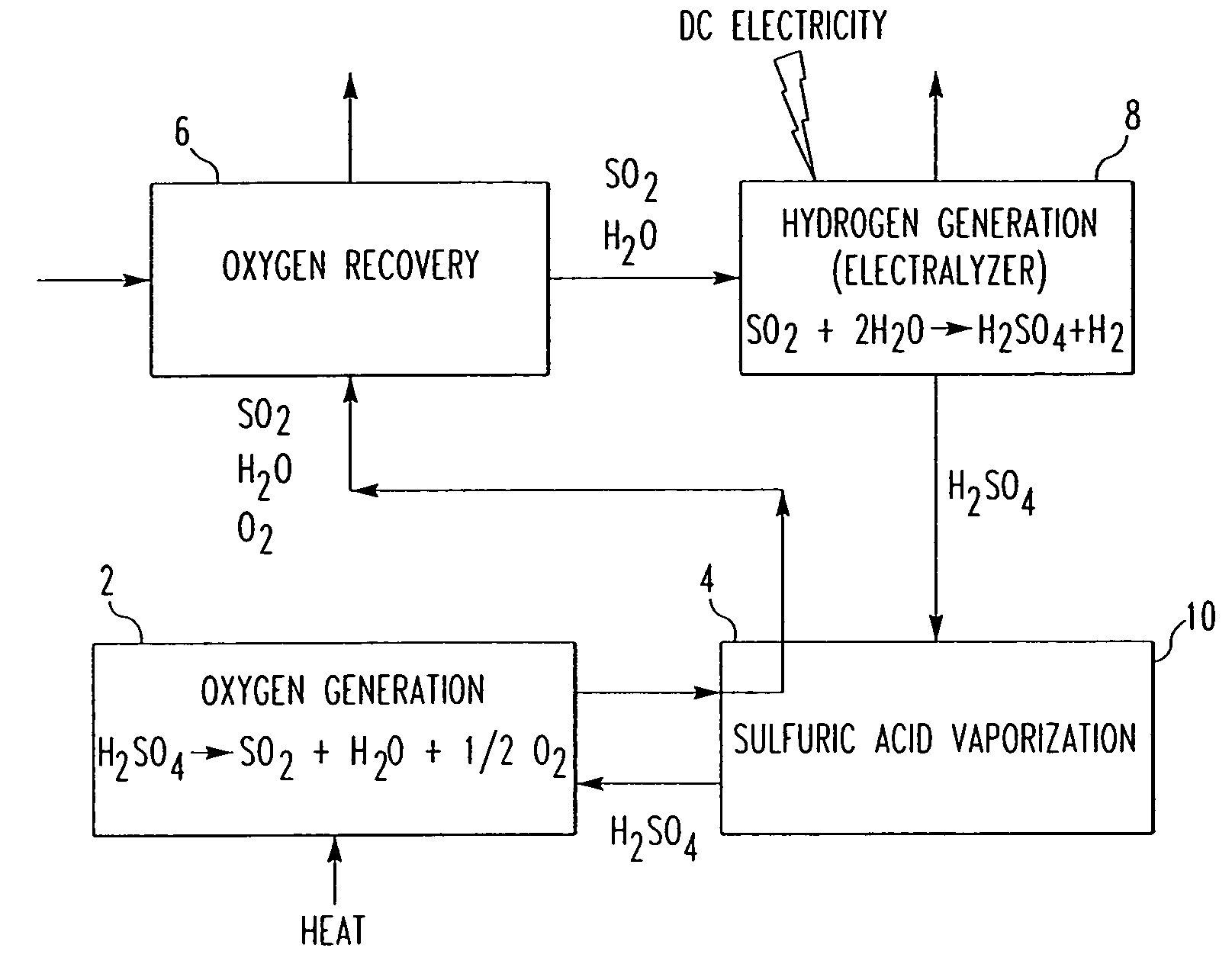Isolated hydrogen production process
- Summary
- Abstract
- Description
- Claims
- Application Information
AI Technical Summary
Benefits of technology
Problems solved by technology
Method used
Image
Examples
Embodiment Construction
[0015] One embodiment of a hydrogen producing sulfur process, hereinafter the Westinghouse Sulfur Process, is shown in FIG. 1. The Westinghouse Sulfur Process produces hydrogen during an electrolysis step wherein hydrogen is derived from sulfur dioxide and water. Energy necessary to drive the hydrogen production is derived from electricity. The process is unique among hydrogen production processes in that substantially elevated temperatures are not necessary during the actual hydrogen production step.
[0016] The process utilizes at least one precursor step to form the sulfur dioxide necessary for hydrogen generation. As shown in the first step under reference number 2, sulfuric acid or sulfur trioxide is decomposed into sulfur dioxide, water and oxygen at elevated temperatures during an oxygen generation step. The thermal energy required for this step is generally heat from a temperature above 800° C., preferably in the range of about 700 to 1100° C. The thermal energy may be provid...
PUM
 Login to View More
Login to View More Abstract
Description
Claims
Application Information
 Login to View More
Login to View More - R&D
- Intellectual Property
- Life Sciences
- Materials
- Tech Scout
- Unparalleled Data Quality
- Higher Quality Content
- 60% Fewer Hallucinations
Browse by: Latest US Patents, China's latest patents, Technical Efficacy Thesaurus, Application Domain, Technology Topic, Popular Technical Reports.
© 2025 PatSnap. All rights reserved.Legal|Privacy policy|Modern Slavery Act Transparency Statement|Sitemap|About US| Contact US: help@patsnap.com


